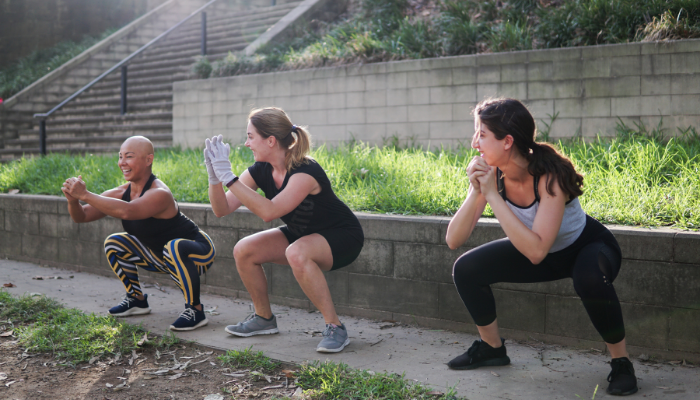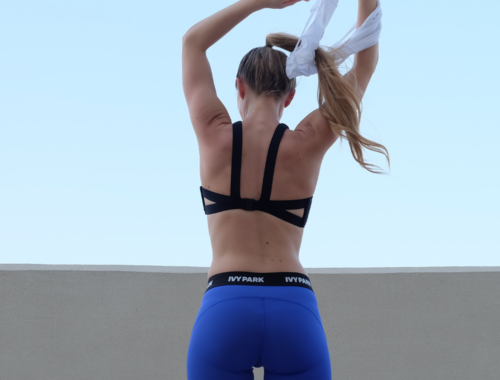
10 TRAINING TIPS YOU’LL NEVER HEAR IN THE GYM
Contents
Let’s collect and consider 10 tips from training experts that you simply don’t usually hear in gyms.
1. Lift weights to extend your flexibility.
By performing weight-training exercises across your entire range of motion, you’ll build strength and extensibility of muscles and connective tissues all directly , says Bill Hartman, an Indianapolis-based strength trainer. «Exercises like lunges, pull-ups, squats, and Romanian dead weight improve your performance within the gym and on the sector better than static stretching.
2. Drink milk.
There has been a backlash in recent years thanks to fat and high calorie content. But switch to skimmed milk and you’ll have a less expensive , simpler and simpler post-workout. «600 ml provides an outsized portion of both serum and casein carbohydrates and proteins, two types that are absorbed at a special rate,» says Hartman. «The combination is right for supporting growth after a workout.
3. Put more weight on one side.
«When lifting weight outside the gym, whether it’s shopping bags or boxes,» says Joe Stankowski, a trainer in Wilmington, «you almost never handle an equivalent load on all sides of your body. That’s why it is sensible to coach with loads-particularly asymmetrical, unevenly weighted weights. «It starts with 5%-10% more weight on one side than the opposite ,» Stankowski says. On your next workout, lift heavier weight with one hand than the opposite . The uneven load will force the muscles to figure harder to balance the load , especially within the core area, surprising your body with new growth. But be careful: Always use weights that you simply are sure you’ll handle safely and in fine condition.
4. Don’t lower the bar to your sternum on a bench press.
Stankowski learned the trick from powerlifting legend Ed Coan. «Actively bringing the bar down until your body forces you to contract the muscles that are crucial for supporting your bench press and lifting large weights. But take it easy: Pull the bar down with the security control and brake without touching the sternum with the bar.

5. Don’t do cardio within the «fat burning zone.
It’s one among the oldest myths of fitness: the thought that you simply got to increase your pulse to a particular level and hold it for a particular amount of your time to burn more fat. «That’s totally false,» says Alwyn Cosgrove, a strength trainer in Santa Clarita, California. «The idea is predicated on the very fact that low intensity exercise burns a better percentage of calories from fat than high intensity exercise,» which is fueled more by its carbohydrate-glucogen stores. «But it is a higher percentage of a smaller number.
«Forget the diagrams that hang on the cardiovascular equipment,» says Cosgrove. «Do high-intensity intervals or lift weights. you cannot burn substantially more calories overall, which results in greater fat loss.
6. Going all the way down in squats.
Contrary to the opinion of the many coaches, studies have shown that the lower you squat, the less risk of injury there’s . «Ask any orthopedic surgeon within the knee is more unstable,» says Cosgrove, «and he’ll say ‘at 90 degrees'» (when your thighs are roughly parallel to the ground). That’s because the shin bone is capable of displacing more in reference to the thigh bone therein position. Added to the present is that the incontrovertible fact that , because the range of motion is shorter, more weight are often added to a parallel squat than are often added to a full squat, which has increased the danger of injury even more. Moreover, when the University of Connecticut researchers compared the results of two groups, one that squatted as deeply as possible, and one that squatted only parallel, they found that doing full movements added significantly more muscle to their thighs.
7. Eat whole eggs, i.e. with yolk.
«Eggs are one among the foremost nutrient-rich foods out there,» says Jeff Volek, Ph.D., RD, professor of exercise physiology at the University of Connecticut. Each provides an honest portion of vitamins and minerals, like vitamin E , iron, and zinc, and 6 or more grams of easily digestible protein (with all the essential amino acids). While it’s true that an outsized ingredient contains four to 5 grams of fat, which is especially of the unsaturated type. «Egg yolks also contain choline,» says Volek, «a substance that breaks down fat, helps catch up on the membranes of just about all the cells in your body, and produces neurotransmitters. does one need one more reason to climb up the dairy aisle? in comparison to the worth of meat and fish, eggs are one among the most cost effective muscle foods on the market.

8. Master your insulin.
«Everything you eat tells your body its function; whether it’s burning fat or storing it,» says strength trainer Toronto Craig Ballantyne, CSCS. The foods you eat cause strong hormonal responses in your body, especially from insulin, a hormone which will close up fat burning during a hurry. «One of the foremost important fat-loss strategies isn’t to let your insulin levels rise too high at any time of the day,» which you’ll achieve mainly by following a high-fiber, low-sugar diet, Ballantyne says. At an equivalent time, high insulin levels are often very beneficial immediately after a workout, when the body needs a fast protein solution. «Insulin can effectively carry over protein to the muscles,» says Ballantyne, «leading to faster recovery from your workout and increased growth.
9. Do basic exercise series with a bar rather than cardio after your workout.
A series of barrel-type exercises, administered one after the opposite without rest. Doing a touch bit after your weight routine won’t only assist you burn more fat than the treadmill, it’ll also reduce the danger of your body using your muscle tissue as fuel (a hazard with any cardio activity). «These exercises work similarly to the way interval exercises do,» says Hartman, «stimulating tons of muscle and forcing your body to burn more fat during and after training. for instance , perform 10 repetitions of those exercises within the following order: morning , squats, press push, front squat, Romanian dead weight and bar rowing.
10. Don’t always train your largest muscles first.
If you perform chin-ups (dominated supine grip) before push-ups, for instance , it is a good rule of thumb, but it isn’t an ideal formula for growth. «Muscles don’t work by themselves,» Cosgrove says, «so if you’ve got trouble raising the bar when doing Bicep Curls, it might be the results of weak biceps, which don’t assist you complete the movement. a far better rule of thumb: «Whatever the training routine, the weaker muscles come first, albeit it means you’re violating other rules you’ve heard before.
I’m sure that if you follow the following pointers , you’ll achieve your goals.

GAIN MUSCLE MASS, LOSE WEIGHT AND FAT? Make it Easy
También te puede interesar

Lauralie Chapados: The Bikini Fitness Queen and Her Inspiring Transformation
noviembre 10, 2024
BENEFITS OF HIGH PROTEIN DIETS IN WEIGHT LOSS
enero 3, 2021
